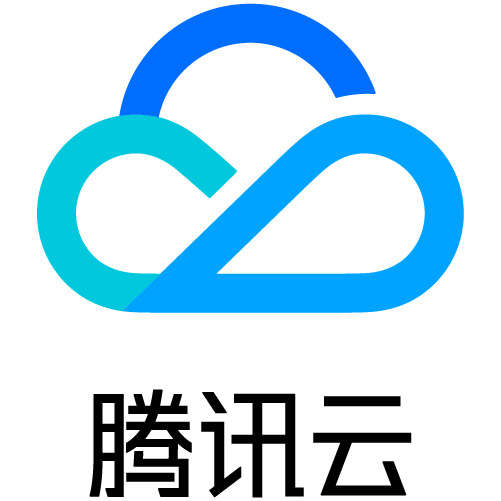SpringBoot 集成腾讯云(对象存储、短信)
SpringBoot 集成腾讯云对象存储1.从腾讯云上获取需要的资料1. API密钥secretId和API密钥secretKey2. 存储桶空间名称、存储桶所属地域、存储桶访问域名2.导入依赖3.创建工具类短信1.登录腾讯云获取资料1. API密钥secretId和API密钥secretKey2. AppId、模板IDTemplateId2. 导入依赖3. 创建工具类对象存储1.从腾讯云上获取需
·
SpringBoot 集成腾讯云
对象存储
1.从腾讯云上获取需要的资料
1. API密钥secretId和API密钥secretKey

2. 存储桶空间名称、存储桶所属地域、存储桶访问域名

2.导入依赖
我采用的是5.6.42的版本
<!-- https://mvnrepository.com/artifact/com.qcloud/cos_api -->
<dependency>
<groupId>com.qcloud</groupId>
<artifactId>cos_api</artifactId>
<version>5.6.42</version>
</dependency>
3.创建工具类
后期完善其他接口
package com.ddz.project.common.utils;
import com.qcloud.cos.COSClient;
import com.qcloud.cos.ClientConfig;
import com.qcloud.cos.auth.BasicCOSCredentials;
import com.qcloud.cos.auth.COSCredentials;
import com.qcloud.cos.exception.CosClientException;
import com.qcloud.cos.model.PutObjectRequest;
import com.qcloud.cos.model.PutObjectResult;
import com.qcloud.cos.region.Region;
import lombok.Data;
import lombok.extern.slf4j.Slf4j;
import org.springframework.beans.factory.annotation.Value;
import org.springframework.context.annotation.Configuration;
import org.springframework.web.multipart.MultipartFile;
import java.io.File;
import java.io.IOException;
import java.util.Calendar;
/**
* @program: dashen-api
* @description 腾讯云对象存储工具类
* @author: ddz
* @create: 2021-04-15 16:15
**/
@Slf4j
@Component
public class QCloudCosUtils {
//API密钥secretId
private String secretId="API密钥secretId";
//API密钥secretKey
private String secretKey="API密钥secretKey";
//存储桶所属地域
private String region="存储桶所属地域";
//存储桶空间名称
private String bucketName="存储桶空间名称";
//存储桶访问域名
private String url;
//上传文件前缀路径(eg:/images/) 设置自己的主目录
private String prefix;
/**
* 上传File类型的文件
*
* @param file 文件
* @return 上传文件在存储桶的链接
*/
public String upload(File file) {
//生成唯一文件名
String newFileName = generateUniqueName(file.getName());
Calendar cal = Calendar.getInstance();
int year = cal.get(Calendar.YEAR);
int month = cal.get(Calendar.MONTH) + 1;
int day = cal.get(Calendar.DATE);
//文件在存储桶中的key
String key = prefix + year + "/" + month + "/" + day + "/" + newFileName;
//声明客户端
COSClient cosClient = null;
try {
//初始化用户身份信息(secretId,secretKey)
COSCredentials cosCredentials = new BasicCOSCredentials(secretId, secretKey);
//设置bucket的区域
ClientConfig clientConfig = new ClientConfig(new Region(region));
//生成cos客户端
cosClient = new COSClient(cosCredentials, clientConfig);
//创建存储对象的请求
PutObjectRequest putObjectRequest = new PutObjectRequest(bucketName, key, file);
//执行上传并返回结果信息
// new PutObjectRequest(bucketName)
PutObjectResult putObjectResult = cosClient.putObject(putObjectRequest);
return url + key;
} catch (CosClientException e) {
e.printStackTrace();
} finally {
// 关闭客户端(关闭后台线程)
cosClient.shutdown();
}
return null;
}
/**
* upload()重载方法
*
* @param multipartFile 文件对象
* @return 上传文件在存储桶的链接
*/
public String upload(MultipartFile multipartFile) {
//生成唯一文件名
String newFileName = generateUniqueName(multipartFile.getOriginalFilename());
Calendar cal = Calendar.getInstance();
int year = cal.get(Calendar.YEAR);
int month = cal.get(Calendar.MONTH) + 1;
int day = cal.get(Calendar.DATE);
//文件在存储桶中的key
String key = prefix + year + "/" + month + "/" + day + "/" + newFileName;
//声明客户端
COSClient cosClient = null;
//准备将MultipartFile类型转为File类型
File file = null;
try {
//生成临时文件
file = File.createTempFile("temp", null);
//将MultipartFile类型转为File类型
multipartFile.transferTo(file);
//初始化用户身份信息(secretId,secretKey)
COSCredentials cosCredentials = new BasicCOSCredentials(secretId, secretKey);
//设置bucket的区域
ClientConfig clientConfig = new ClientConfig(new Region(region));
//生成cos客户端
cosClient = new COSClient(cosCredentials, clientConfig);
//创建存储对象的请求
PutObjectRequest putObjectRequest = new PutObjectRequest(bucketName, key, file);
//执行上传并返回结果信息
PutObjectResult putObjectResult = cosClient.putObject(putObjectRequest);
return url + key;
} catch (IOException e) {
e.printStackTrace();
} finally {
// 关闭客户端(关闭后台线程)
cosClient.shutdown();
}
return null;
}
/**
* upload()重载方法
* 流方式上传
*
* @param multipartFile
* @return 上传文件在存储桶的链接
*/
public String uploadStream(MultipartFile multipartFile) {
//生成唯一文件名
String newFileName = generateUniqueName(multipartFile.getOriginalFilename());
Calendar cal = Calendar.getInstance();
int year = cal.get(Calendar.YEAR);
int month = cal.get(Calendar.MONTH) + 1;
int day = cal.get(Calendar.DATE);
//文件在存储桶中的key
String key = prefix + year + "/" + month + "/" + day + "/" + newFileName;
//声明客户端
COSClient cosClient = null;
try {
//初始化用户身份信息(secretId,secretKey)
COSCredentials cosCredentials = new BasicCOSCredentials(secretId, secretKey);
//设置bucket的区域
ClientConfig clientConfig = new ClientConfig(new Region(region));
//生成cos客户端
cosClient = new COSClient(cosCredentials, clientConfig);
// 获取文件流
InputStream inputStream = multipartFile.getInputStream();
// 获取文件名
String fileName = multipartFile.getOriginalFilename();
// 创建上传Object的Metadata
ObjectMetadata objectMetadata = new ObjectMetadata();
objectMetadata.setContentLength(inputStream.available());
objectMetadata.setCacheControl("no-cache");
objectMetadata.setHeader("Pragma", "no-cache");
objectMetadata.setContentType(getcontentType(fileName.substring(fileName.lastIndexOf("."))));
objectMetadata.setContentDisposition("inline;filename=" + fileName);
//创建存储对象的请求
PutObjectRequest putObjectRequest = new PutObjectRequest(bucketName, key, inputStream, objectMetadata);
//执行上传并返回结果信息
PutObjectResult putObjectResult = cosClient.putObject(putObjectRequest);
return url + key;
} catch (IOException e) {
e.printStackTrace();
} finally {
// 关闭客户端(关闭后台线程)
cosClient.shutdown();
}
return null;
}
/**
* Description: 判断Cos服务文件上传时文件的contentType
*
* @param filenameExtension 文件后缀
* @return String
*/
public static String getcontentType(String filenameExtension) {
if (filenameExtension.equalsIgnoreCase("bmp")) {
return "image/bmp";
}
if (filenameExtension.equalsIgnoreCase("gif")) {
return "image/gif";
}
if (filenameExtension.equalsIgnoreCase("jpeg") || filenameExtension.equalsIgnoreCase("jpg")
|| filenameExtension.equalsIgnoreCase("png")) {
return "image/jpeg";
}
if (filenameExtension.equalsIgnoreCase("html")) {
return "text/html";
}
if (filenameExtension.equalsIgnoreCase("txt")) {
return "text/plain";
}
if (filenameExtension.equalsIgnoreCase("vsd")) {
return "application/vnd.visio";
}
if (filenameExtension.equalsIgnoreCase("pptx") || filenameExtension.equalsIgnoreCase("ppt")) {
return "application/vnd.ms-powerpoint";
}
if (filenameExtension.equalsIgnoreCase("docx") || filenameExtension.equalsIgnoreCase("doc")) {
return "application/msword";
}
if (filenameExtension.equalsIgnoreCase("xml")) {
return "text/xml";
}
return "image/jpeg";
}
/**
* 根据UUID生成唯一文件名
*
* @param originalName
* @return
*/
public String generateUniqueName(String originalName) {
return SnowflakeUtils.nextIdStr() + originalName.substring(originalName.lastIndexOf("."));
}
}
短信
1.登录腾讯云获取资料
1. API密钥secretId和API密钥secretKey

2. AppId、模板IDTemplateId
appId在应用列表里面
先创建签名,再用签名创建模板、注意模板需要的参数有几个

2. 导入依赖
<!-- https://mvnrepository.com/artifact/com.tencentcloudapi/tencentcloud-sdk-java -->
<dependency>
<groupId>com.tencentcloudapi</groupId>
<artifactId>tencentcloud-sdk-java</artifactId>
<version>4.0.11</version>
</dependency>
3. 创建工具类
package com.communist.common.util;
import com.communist.common.constant.SmsConstant;
import com.tencentcloudapi.common.Credential;
import com.tencentcloudapi.common.exception.TencentCloudSDKException;
import com.tencentcloudapi.common.profile.ClientProfile;
import com.tencentcloudapi.common.profile.HttpProfile;
import com.tencentcloudapi.sms.v20190711.SmsClient;
import com.tencentcloudapi.sms.v20190711.models.SendSmsRequest;
import com.tencentcloudapi.sms.v20190711.models.SendSmsResponse;
import com.tencentcloudapi.sms.v20190711.models.SendStatus;
import org.springframework.stereotype.Component;
/**
* @Author ddz
* @ClassName SmsUtils
* @Description 短信
* @Date 2021/8/2 11:09
* @Version 1.0
**/
@Component
public class SmsUtils {
//API密钥secretId
private String secretId="API密钥secretId";
//API密钥secretKey
private String secretKey="API密钥secretKey";
// appId
private String appId = "appId";
// 短信模板id
private String templateId = "短信模板id";
/**
* 发送短信
*
* @param phone 手机号
* @param params 模板参数,若无模板参数,则设置为空。 [前缀,验证码,时间]
* @return
*/
public boolean sendSms(String phone, String[] params) throws TencentCloudSDKException {
// 实例化一个认证对象,入参需要传入腾讯云账户secretId,secretKey,此处还需注意密钥对的保密
// 密钥可前往https://console.cloud.tencent.com/cam/capi网站进行获取
Credential cred = new Credential(secretId, secretKey);
// 实例化一个http选项,可选的,没有特殊需求可以跳过
HttpProfile httpProfile = new HttpProfile();
httpProfile.setEndpoint("sms.tencentcloudapi.com");
// 实例化一个client选项,可选的,没有特殊需求可以跳过
ClientProfile clientProfile = new ClientProfile();
clientProfile.setHttpProfile(httpProfile);
// 实例化要请求产品的client对象,clientProfile是可选的
SmsClient client = new SmsClient(cred, "ap-guangzhou", clientProfile);
// 实例化一个请求对象,每个接口都会对应一个request对象
SendSmsRequest req = new SendSmsRequest();
// +86 代表国内
phone = "+86" + phone;
String[] phoneNumberSet = {phone};
req.setPhoneNumberSet(phoneNumberSet);
req.setSmsSdkAppid(appId);
req.setTemplateID(templateId);
req.setTemplateParamSet(params);
// 返回的resp是一个SendSmsResponse的实例,与请求对象对应
SendSmsResponse resp = client.SendSms(req);
// 输出json格式的字符串回包
SendStatus[] sendStatusSet = resp.getSendStatusSet();
SendStatus result = sendStatusSet[0];
if (null != result) {
String code = result.getCode();
if ("Ok".equals(code)) {
return true;
}
}
return false;
}
}
更多推荐
 已为社区贡献7条内容
已为社区贡献7条内容







所有评论(0)